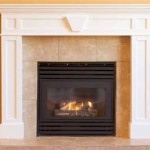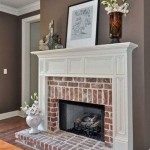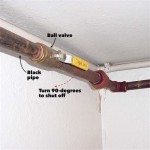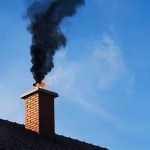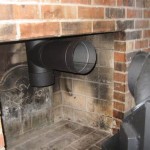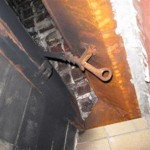Fireplace With Insert: Enhancing Efficiency and Aesthetics
A fireplace insert is a self-contained heating appliance designed to fit inside an existing masonry or factory-built fireplace. It represents a significant upgrade in both heating efficiency and aesthetic appeal compared to traditional open fireplaces. This article will delve into the benefits, types, installation, and maintenance of fireplace inserts, providing a comprehensive understanding of this home heating option.
The primary function of a fireplace insert is to improve the heat output of a fireplace. Traditional open fireplaces are notoriously inefficient, with the majority of heat generated escaping up the chimney. Fireplace inserts, on the other hand, are designed to radiate heat into the room, significantly reducing heat loss and lowering heating costs. They are also more environmentally friendly, burning fuel more completely and producing less smoke and emissions.
Benefits of Installing a Fireplace Insert
One of the most compelling reasons to install a fireplace insert is the increased heating efficiency. Open fireplaces can actually draw warm air out of a room and up the chimney, creating a draft and making the heating system work harder. An insert, being a closed combustion system, prevents this reverse draft and directs the heat into the living space. Many inserts boast efficiency ratings of 70% or higher, compared to the 10-20% efficiency of an open fireplace.
Another key benefit is the improved safety. Open fireplaces can pose a fire hazard due to sparks escaping and the risk of creosote buildup in the chimney, which is a flammable substance. Fireplace inserts are designed with safety features such as sealed combustion chambers and proper venting systems that minimize these risks. They also typically have a door that prevents sparks and embers from escaping.
Beyond functionality, fireplace inserts enhance the aesthetic appeal of a fireplace. They are available in a variety of styles, finishes, and sizes, allowing homeowners to customize the look of their fireplace and complement their home décor. Inserts can transform a dated or inefficient fireplace into a beautiful and efficient focal point.
Furthermore, fireplace inserts offer increased control over the heating process. Many models feature thermostats and blowers that allow homeowners to regulate the temperature and distribute heat evenly throughout the room. This level of control is not possible with a traditional open fireplace.
Types of Fireplace Inserts
Fireplace inserts are categorized by the type of fuel they burn. The most common types are wood-burning, gas, and electric inserts. Each type has its own advantages and disadvantages, and the best choice depends on individual needs and preferences.
Wood-burning inserts are a popular choice for those who enjoy the ambiance of a wood fire. They provide a significant amount of heat and offer the classic crackling sound and smell of burning wood. However, they require a consistent supply of wood, regular cleaning, and adherence to local regulations regarding wood burning.
Gas fireplace inserts offer convenience and ease of use. They can be fueled by natural gas or propane and are typically equipped with a thermostat and remote control. Gas inserts light quickly and easily, and they require minimal maintenance. However, they do not provide the same authentic wood-burning experience as wood inserts.
Electric fireplace inserts are the easiest to install and use. They simply plug into a standard electrical outlet and can be operated with a remote control. Electric inserts offer a realistic flame effect and provide supplemental heat. However, they are not as efficient as wood or gas inserts and may not be suitable for heating large spaces.
In addition to fuel type, fireplace inserts are also available in different sizes and styles. The size of the insert should be chosen based on the size of the fireplace opening and the heating needs of the room. Styles range from traditional to contemporary, with options available to suit any décor.
Installation and Maintenance of Fireplace Inserts
The installation of a fireplace insert is a complex process that should be performed by a qualified professional. Proper installation is crucial for ensuring safety and optimal performance. The installer will need to assess the existing fireplace and chimney, determine the appropriate size and type of insert, and ensure that the venting system is properly connected and functioning.
For wood-burning inserts, the chimney liner must be inspected and potentially replaced to ensure it is properly sized and certified for use with a wood-burning appliance. Gas inserts also require proper venting to remove combustion gases safely. Electric inserts are the simplest to install, but they still require some basic electrical knowledge and attention to safety precautions.
Regular maintenance is essential for keeping a fireplace insert in good working condition. Wood-burning inserts require regular cleaning to remove ash and creosote buildup. This can be done with a chimney sweep, vacuum specifically for ash removal, or specialized tools. Gas inserts should be inspected annually by a qualified technician to ensure that the gas lines are properly connected and that the burner is functioning correctly. Electric inserts require minimal maintenance, but they should be cleaned periodically to remove dust and debris.
Proper operation is just as important as maintenance. With wood-burning inserts, it is crucial to use seasoned wood to minimize creosote buildup. With gas inserts, it is important to follow the manufacturer's instructions for lighting and operating the appliance. Understanding and adhering to the manufacturer’s recommendations ensures safety and prolongs the lifespan of the insert.
Selecting the right size fireplace insert is crucial for optimal heating performance. An insert that is too small will not adequately heat the room, while an insert that is too large may overheat the space and waste fuel. The size of the insert should be determined based on the square footage of the room, the insulation level of the home, and the climate.
The material of the fireplace insert also affects its performance. Cast iron inserts are known for their durability and ability to retain heat, while steel inserts heat up more quickly. Some inserts are also lined with firebrick, which helps to insulate the combustion chamber and improve efficiency.
In conclusion, a fireplace insert offers a significant improvement over traditional open fireplaces in terms of heating efficiency, safety, and aesthetic appeal. By understanding the different types, installation requirements, and maintenance procedures, homeowners can make an informed decision about whether a fireplace insert is the right choice for their home.

Fireplace Insert Guide Fireplaces Direct Learning Center

Napoleon Epi3 Wood Fireplace Insert Inserts By Rockford Chimney

Fireplace Insert Installation Wood Inserts Gas Pellet And Electric

T25i Timberwolf Wood Fireplace Insert Hearth Stove Patio

What S Best A Fireplace Stove Or Insert We Love Fire

Modern Flames Redstone 30 Inch Built In Electric Fireplace Insert Firebox Heater Rs 3021 Fireplaces Depot

Premium Wood Fireplace Inserts Made In Usa Lopi Stoves

Enviro E Series Gas Or Propane Insert Fireplace Fireplaces By Cameron

Ventis Hei240 Wood Burning Insert Rockford Chimney

Why Get A Fireplace Insert Wood Gas Inserts In Tn Al
Related Posts

